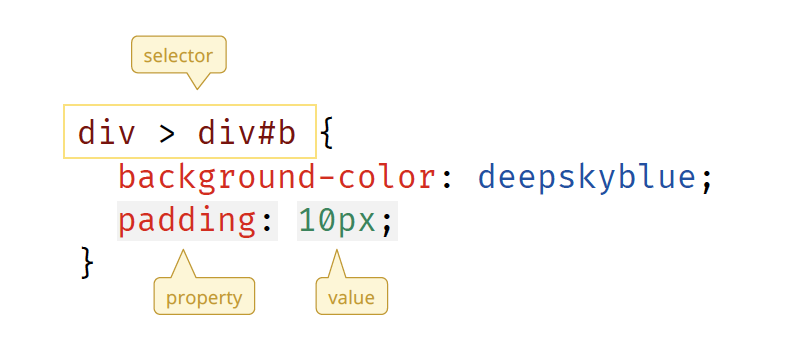CSS
A pattern to select (or find) elements in the DOM
A CSS rule has three parts
- selector
- declaration block
- one or more properties with values

Basic selectors
div { … } select by tag type
.foo { … } select by class name
#a { … } select by element id attribute
[type="text"] { … } select elements matching attribute valueHierarchal selectors
div > div { … } select child elements by parent-child relationship
div div { … } select child elements by descendant relationshipPseudo class selectors (many more …)
:first-child select first child
:hover select when mouse is over elementCombining selectors
div#a { … } select elements matching all selectors
div, #a { … } select elements matching at least one selector/* universal selector */
* {
background-color: hsl(325, 63%, 82%);
text-align: center;
}
/* type selector */
span {
background-color: skyblue;
}
/* id selector */
#div1 {
color: green;
text-align: center;
font-size: 20px;
font-weight: bold;
}
/* class selector */
.div2 {
color: orange;
text-align: left;
font-size: 10px;
font-weight: bold;
}
/* attribute selector */
div[style] {
text-align: center;
color: purple;
font-size: 20px;
font-weight: bold;
margin-bottom: -20px;
}
/* combinator selector */
div>p {
color: #009900;
font-size: 32px;
font-weight: bold;
margin: 0px;
text-align: center;
}
/* class selector */
.box {
background-color: yellow;
width: 300px;
height: 100px;
margin: auto;
font-size: 30px;
text-align: center;
}
/* pseudo selector */
.box:hover {
background-color: orange;
}